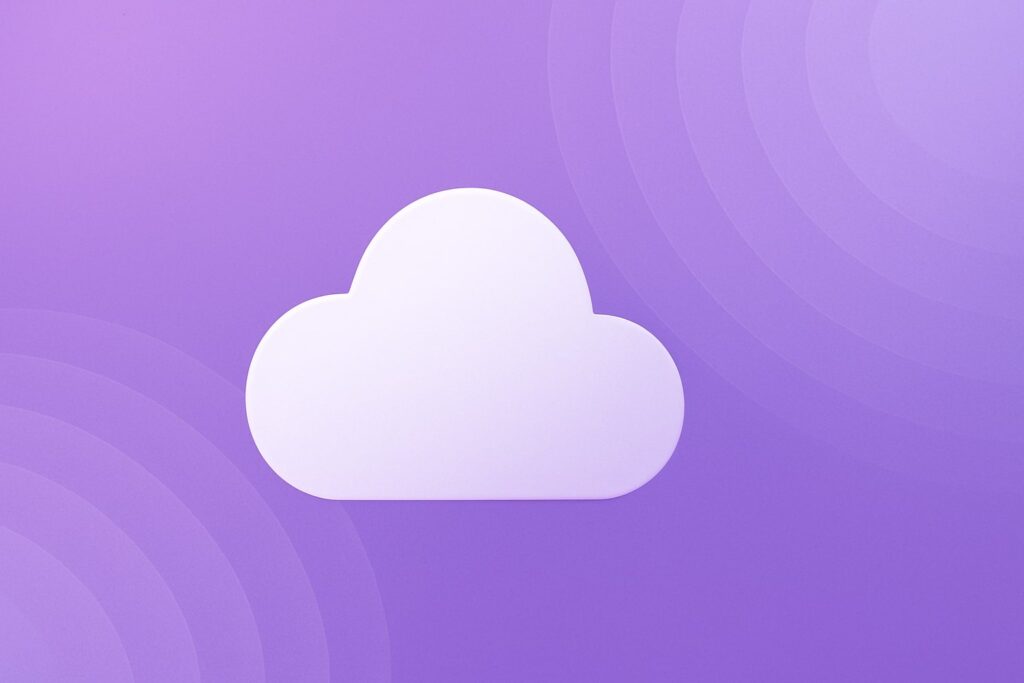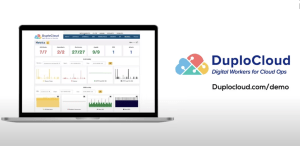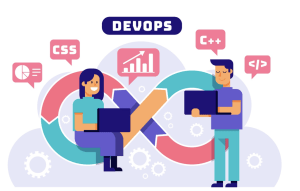Did you know that most organizations waste up to 32% of their cloud provisioning on unused or poorly configured resources? That’s a self-estimated figure too, so the real wastage could be much, much higher, according to Flexera’s 2022 State of the Cloud Report.
Without effective cloud provisioning strategies, companies face rising expenses, inconsistent setups, and infrastructure that can’t keep up with demand.
Cloud technology is constantly evolving. Cloud provisioning helps organizations adapt quickly to new demands.
Cloud provisioning offers many benefits, such as but not limited to:
- Better scalability
- More flexibility
- Lower costs.
However, cloud environments are complex. They pose challenges, including managing complexity and security risks. You need to work with the right partner to leverage the advantages of your cloud environments, prevent cloud bloat, and optimize your cloud resources to meet your organization’s needs.
In this article, we’ll explore cloud provisioning, its types, and best practices to optimize your cloud infrastructure.
Key Takeaways
- Cloud provisioning is the foundation of building and running an efficient cloud infrastructure. The most cost- and time-effective cloud provisioning enables organizations to scale computing resources on demand while controlling cloud costs.
- When you use infrastructure as code (IaC) and automated provisioning through your cloud service provider, you will benefit from consistent configuration across all environments.
- Organizations that follow cloud provisioning best practices, such as shift-left security and regular monitoring, benefit from stronger security, lower costs, and faster deployment times.
What is Cloud Provisioning?
Modern businesses rely heavily on cloud computing for almost everything: applications, software, data storage, AI, and everything else. Cloud-based services give companies flexibility, scalability, and the storage they need.
Cloud provisioning enables organizations to scale operations quickly and efficiently. But this shift brings new challenges, especially in cloud provisioning.
Cloud provisioning is the process of managing cloud resources more effectively. It includes creating, configuring, and deploying cloud-based resources like virtual machines (VMs), storage, and networks. Cloud adoption, or transferring from in-house or on-premises resources to a cloud provider, is made easier using cloud provisioning. It ensures the cloud infrastructure meets an organization’s specific needs, thereby improving overall efficiency and performance.
Now, let’s look at the three main types of cloud provisioning.
3 Main Types of Cloud Provisioning
Every type of cloud provisioning has unique features and uses. Understanding these types helps you choose the best approach for your organization.
1. Manual Cloud Provisioning
Manual cloud provisioning involves setting up and managing cloud resources manually. As you can expect, this involves a lot of work, and a lot can go wrong. You use tools such as your cloud provider’s console or command-line interface. The manual method works well for small deployments or test environments.
But it takes a lot of time. People can make mistakes easily. This makes it less useful for large or complex deployments.
2. Automated Cloud Provisioning
Automated cloud provisioning uses software tools to set up and manage computing resources automatically. Tools like Terraform or Ansible create environments that work the same way every time. Automated provisioning is excellent for large deployments. It maintains configuration consistency and reduces human error.
An example of this is the Department of Defense (DoD), which uses automated provisioning to manage its extensive cloud infrastructure. They can provision resources quickly and securely, which is what the DoD needs in a hostile world.
3. Hybrid Cloud Provisioning
Hybrid cloud provisioning uses multiple cloud platforms and on-site infrastructure together. This approach helps companies with old systems that can’t easily move to the cloud. Hybrid cloud provisioning connects cloud services with existing infrastructure. It provides a smooth way to manage resources.
Next, we need to consider the importance of Infrastructure-as-Code (IaC) for cloud provisioning.
The Role of Infrastructure as Code (IaC) in Cloud Provisioning
Infrastructure as code (IaC) plays a significant role in cloud provisioning. IaC defines and manages cloud resources using code-based scripts. Your IT teams and DevOps partners can control versions of these scripts. You can deploy them the same way every time. This keeps your cloud environment consistent and predictable. It’s easier to manage and maintain.
Terraform is an example of this, provisioning resources quickly and securely. It reduces human error and improves efficiency. IaC also helps your team respond faster to demand changes. You don’t have to worry about manual configuration errors.
Now we need to consider the role of security and how organizations can keep their cloud provisions secure.
How to Keep Your Cloud Provisioning Secure
Security is critical in cloud provisioning. Cloud-based attacks are constantly increasing, and getting smarter thanks to AI tools. At all times, you need to ensure your cloud infrastructure is secure and compliant with regulations. Use cloud-native security features, such as firewalls and encryption.
Firewalls and encryption are useful for protecting your data and resources. A zero-trust security model can help prevent unauthorized access to your cloud resources. For example, cloud-based firewalls and intrusion detection systems detect and prevent malicious activity. This keeps your cloud infrastructure secure and available.
Explore: Continuous Compliance Strategies for DevOps Teams and DevSecOps for Regulated Industries
Now, let’s go over the four best practices for optimizing your cloud provisions.
4 Best Practices for Optimizing Cloud Provisioning
To optimize your cloud provisioning process, follow these best practices:
1. Use Infrastructure as Code (IaC)
Infrastructure as code (IaC) is a powerful tool for automating cloud provisioning. IaC tools let you define and manage cloud infrastructure using scripts. You can control versions of these scripts. You can deploy them the same way every time.
This keeps your cloud environment consistent and predictable. It’s easier to manage and maintain. Tools for this include Microsoft Azure Resource Manager, AWS CloudFormation, and the DuploCloud DevOps Automation Platform for a multi-cloud environment. IaC also helps control cloud costs by preventing configuration problems.
2. Monitor and Analyze Performance
Regularly check your cloud infrastructure’s performance. You can do this automatically and set up tools to help you monitor this 24/7. Tools like CloudWatch and Prometheus track metrics such as latency, throughput, and error rates.
This enables you to optimize cloud provisioning to meet your application demands. Regular monitoring also finds unused resources. These resources increase cloud costs for no reason.
Learn more: AI Institutional Insight: Use Tribal Knowledge to 10x Onboarding
3. Leverage Cloud-Native Security
Build cloud-native security features into your cloud provisioning process. Use features like cloud-based firewalls, intrusion detection systems, and encryption.
These protect your data and resources. When you use cloud-native security from your cloud service provider, you ensure your cloud infrastructure is secure. It also meets regulatory requirements.
4. Implement Continuous Integration and Continuous Deployment (CI/CD)
Set up CI/CD pipelines to automate application deployment. This includes updates to your cloud infrastructure. This method ensures applications deploy quickly and safely. It reduces downtime and improves efficiency.
An example of this is the Defense Information Systems Agency (DISA), which uses CI/CD pipelines for cloud-based applications. This ensures updates deploy efficiently and securely.
How to Leverage Cloud Provisioning Best Practices
To address the challenges of cloud provisioning, organizations need to follow best practices. This means using infrastructure-as-code (IaC) and shift-left security strategies. IaC uses programming languages to define and manage cloud infrastructure.
IaC means you can keep environments set up the same way every time. Shift-left security means adding security early in development, not at the end. These practices improve cloud provisioning, security, and compliance.
Cloud provisioning is critical in modern IT infrastructure. It helps achieve digital transformation and business continuity. As organizations move to the cloud, they need strong cloud provisioning strategies. This allows them to get maximum benefits while reducing risks.
When you use advanced provisioning techniques and best practices, organizations can make sure their cloud environments are secure, scalable, and ready to meet changing business needs.
The Future of Cloud Provisioning
Cloud provisioning is crucial for cloud adoption. It tailors cloud infrastructure to meet organizational needs. When you understand provisioning types and apply best practices, like IaC, performance monitoring, cloud-native security, and CI/CD, you make cloud provisioning work better.
As the cloud continues to evolve, organizations must stay ahead. Embrace innovative approaches to cloud provisioning and management.
The future of cloud provisioning depends on adopting new technologies, like AI, and evolving best practices. The need for efficient, secure, and scalable cloud provisioning will keep increasing
💡You may also be interested in: What Is Cloud Services Automation?
Eliminate DevOps hiring needs. Deploy secure, compliant infrastructure in days, not months. Accelerate your launch and growth by avoiding tedious infrastructure tasks.
Join thousands of Dev teams getting their time back. Leverage DuploCloud DevOps Automation Platform, backed by infrastructure experts to automate and manage DevOps tasks. Drive savings and faster time-to-market with a 30-minute live demo
Cloud Provisioning Frequently Asked Questions (FAQs)
What is the difference between cloud provisioning and cloud deployment?
Cloud provisioning is the process of setting up and allocating computing resources, storage, and network configurations in your cloud service environment.
Deployment is the process of launching and running applications on those provisioned resources. Think of provisioning as preparing the infrastructure foundation. Deployment is putting your applications to work on that foundation.
How can I reduce cloud costs through better provisioning?
Better provisioning helps control cloud costs by eliminating waste and optimizing resources. Use automated provisioning tools to shut down unused resources.
Right-size your computing resources based on actual demand. Set up policies that prevent over-provisioning. Regular monitoring and IaC practices ensure you only pay for what you need. This avoids the common problem of forgotten resources.
Which cloud service provider offers the best provisioning tools?
The best cloud provider for provisioning depends on your needs. Microsoft Azure Resource Manager works great for template-based provisioning in Windows environments. AWS offers strong automation through CloudFormation and many third-party tools.
Google Cloud Platform provides a strong native Kubernetes integration. Most organizations benefit from using tools like Terraform. These work across multiple cloud service providers.
Can I automate provisioning across multiple cloud providers?
Yes, you can automate provisioning across multiple cloud providers. Use infrastructure-as-code tools such as Terraform, Pulumi, or Ansible. These tools provide one configuration language. It works across different cloud platforms.
You can manage hybrid and multi-cloud environments from a single codebase. This approach reduces complexity. It ensures a consistent configuration no matter which cloud service you’re using.



